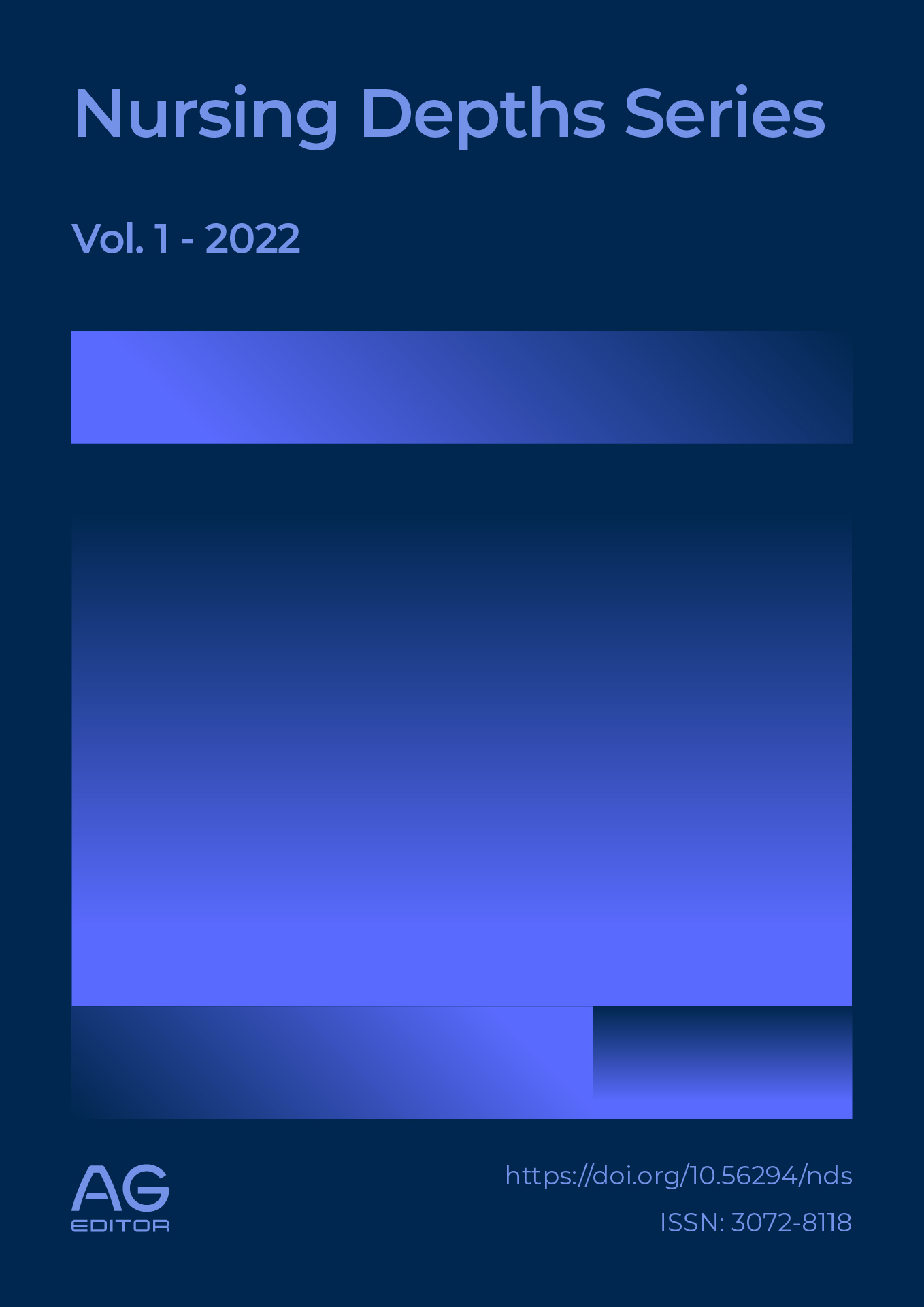Lifestyle in older adults and nursing intervention during the COVID-19 pandemic in North Lima
DOI:
https://doi.org/10.56294/nds202220Keywords:
Lyfestyle, Aged, Nursing care, Mental healthAbstract
The lifestyle of older adults worldwide has changed drastically due to the pandemic, where their routine activities have been modified, generating health problems. Therefore, the objective of the research is to determine the lifestyle of older adults and the nursing intervention during the COVID-19 pandemic in North Lima. It is a quantitative, descriptive-cross-sectional study, with a population of 206 participants over 60 years of age who answered a questionnaire on sociodemographic aspects and the FANTASTICO instrument. The results showed that of adults aged 60 to 90 years, 10.2% have a low lifestyle and 19.9% have a fantastic lifestyle. In conclusion, educational counseling on lifestyle management at home should be provided for older adults, as this will allow them to maintain their healthy lifestyle.
References
C. Souza, “Estilo de Vida Saludable,” Univ. y Salud, vol. 14, no. 1, p. 1, 2012, Accessed: Nov. 03, 2022. [Online]. Available: http://www.scielo.org.co/scielo.php?script=sci_arttext&pid=S0124-71072012000200001#:~:text=La Organización Mundial de la,factores socioculturales y características personales%22.
[2] Organizacion Panamericana de la Salud, “El número de adultos mayores con necesidades de cuidado a largo plazo se triplicará para 2050 en las Américas,” OPS, 2019. https://www3.paho.org/hq/index.php?option=com_content&view=article&id=15474:number-of-older-adults-with-long-term-care-needs-will-triple-by-2050-paho-warns&Itemid=0&lang=es#gsc.tab=0
[3] G. Maldonado, B. Gómez, L. Becerril, and G. Solano, “Lifestyle of the elderly person living with diabetes and characterization of nursing diagnoses,” Texto e Context. Enferm., vol. 28, no. 1, p. e20170552, 2019, doi: 10.1590/1980-265x-tce-2017-0552. DOI: https://doi.org/10.1590/1980-265x-tce-2017-0552
[4] Organizacion Mundial de la Salud, “Envejecimiento y salud,” OMS, 2022. https://www.who.int/es/news-room/fact-sheets/detail/ageing-and-health.
[5] R. Stefanacci, “Cambios corporales relacionados con el envejecimiento,” Manual MSD. pp. 1–12, 2022, [Online]. Available: https://www.msdmanuals.com/es/hogar/salud-de-las-personas-de-edad-avanzada/envejecimiento-del-organismo/cambios-corporales-relacionad…1/12.
[6] Y. Duan et al., “Lifestyle Behaviors and Quality of Life Among Older Adults After the First Wave of the COVID-19 Pandemic in Hubei China,” Front. Public Heal., vol. 9, no. 1, p. 744514, 2021, doi: 10.3389/fpubh.2021.744514. DOI: https://doi.org/10.3389/fpubh.2021.744514
[7] A. Ventura and A. Zevallos, “Estilos de vida: alimentación, actividad física, descanso y sueño de los adultos mayores atendidos en establecimientos del primer nivel, Lambayeque, 2017.,” ACC CIETNA Rev. la Esc. Enfermería, vol. 6, no. 1, pp. 60–67, Jul. 2019, doi: 10.35383/cietna.v6i1.218. DOI: https://doi.org/10.35383/cietna.v6i1.218
[8] T. Ataka, N. Kimura, A. Eguchi, and E. Matsubara, “Changes in objectively measured lifestyle factors during the COVID-19 pandemic in community-dwelling older adults,” BMC Geriatr., vol. 22, no. 326, Dec. 2022, doi: 10.1186/s12877-022-03043-1. DOI: https://doi.org/10.1186/s12877-022-03043-1
[9] R. Hernández, M. Molina, Y. Hernandez, E. Lemus, A. Hernandez, and D. Gonzalez, “Efectividad de intervención educativa sobre Estilos de Vida en Adulto Mayores, Nueva Paz 2019- 2020,” Rev. Ciencias la Salud, vol. 5, no. 1, pp. 29–37, 2021, Accessed: Nov. 03, 2022. [Online]. Available: https://revistas.utm.edu.ec/index.php/QhaliKay/article/view/2943/3044. DOI: https://doi.org/10.33936/qkrcs.v5i1.2943
[10] P. Pavón, A. Martinez, and G. Gutierrez, “Adultos mayores Población vulnerable en México: Una aproximación multivariada,” Rev. Salud Publica, vol. 1, no. 7, pp. 1–17, 2020, Accessed: Nov. 03, 2022. [Online]. Available: https://revistas.unc.edu.ar/index.php/RSD/article/view/25242/29629.
[11] O. Diaz, I. Herranz, P. Fernandez, and Gomez, “Lifestyles of Spanish elders from supervened SARS-CoV-2 variant onwards: A correlational research on life satisfaction and social-relational praxes,” Front. Psychol., vol. 1, no. 1, pp. 1–11, 2022, Accessed: Nov. 03, 2022. [Online]. Available: https://www.frontiersin.org/articles/10.3389/fpsyg.2022.948745/full.
[12] M. Visser, H. Wijnhoven, H. Comijs, F. Thomése, J. Twisk, and D. Deeg, “A Healthy Lifestyle in Old Age and Prospective Change in Four Domains of Functioning,” J. Aging Health, vol. 31, no. 7, pp. 1297–1314, Aug. 2019, doi: 10.1177/0898264318774430. DOI: https://doi.org/10.1177/0898264318774430
[13] E. Toapaxi, Y. Guarate, and N. Cusme, “Influencia del Estilo de vida en el estado de salud en Adultos mayores,” Enfermería Investig. Investig. Vinculación, Docencia y Gestión, vol. 5, no. 4, pp. 18–24, 2020, Accessed: Nov. 03, 2022. [Online]. Available: https://revistas.uta.edu.ec/erevista/index.php/enfi/article/view/966/896. DOI: https://doi.org/10.31243/ei.uta.v5i4.966.2020
[14] C. Pérez and Y. Mallma, “Estilo de vida en adultos mayores con Diabetes Mellitus tipo II en un conjunto habitacional en Lima,” Rev. Investig. Científica Ágora, vol. 8, no. 2, pp. 20–36, 2021, Accessed: Nov. 03, 2022. [Online]. Available: https://62.171.141.246/index.php/cieUMA/article/view/189/154. DOI: https://doi.org/10.21679/arc.v8i2.214
[15] C. Fernández and P. Baptista, “Metodología de la Investigación.” p. 634, 2015, [Online]. Available: http://observatorio.epacartagena.gov.co/wp-content/uploads/2017/08/metodologia-de-la-investigacion-sexta-edicion.compressed.pdf.
[16] M. Villar, Y. Ballinas, C. Gutierrez, and Y. Abgulo, “Análisis de la Confiabilidad del Test Fantástico para medir Estilos de Vida saludables en trabajadores evaluados por el programa ‘Reforma de Vida’ del Seguro Social de Salud (Essalud),” Rev. Peru. Med. Integr., vol. 1, no. 2, pp. 17–26, 2016, [Online]. Available: https://rpmi.pe/index.php/RPMI/article/view/15/11. DOI: https://doi.org/10.26722/rpmi.2016.12.15
Published
Issue
Section
License
Copyright (c) 2022 Enrique Huamani-Uriarte, Niels Romero-Alva (Author)

This work is licensed under a Creative Commons Attribution 4.0 International License.
The article is distributed under the Creative Commons Attribution 4.0 License. Unless otherwise stated, associated published material is distributed under the same licence.






